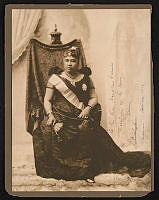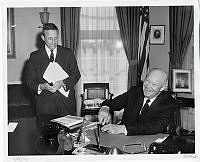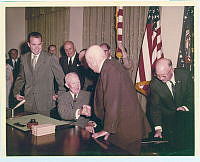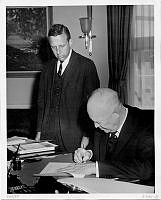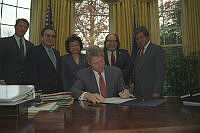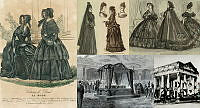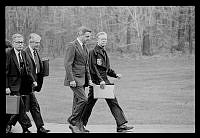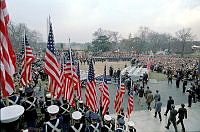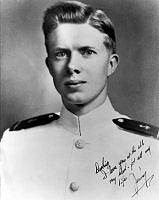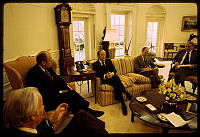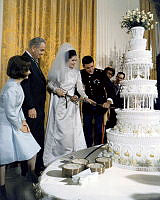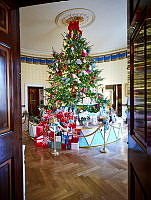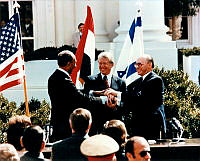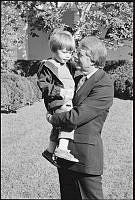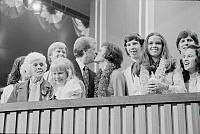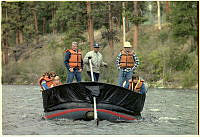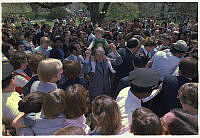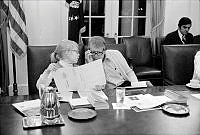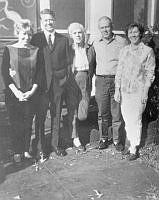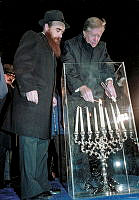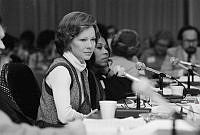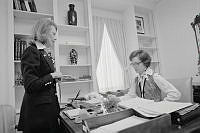White House Decorative Arts in the 1960s
Copyright © White House Historical Association. All rights reserved under international copyright conventions. No part of this article may be reproduced or utilized in any form or by any means, electronic or mechanical, including photocopying, recording, or by any information storage and retrieval system, without permission in writing from the publisher. Requests for reprint permissions should be addressed to books@whha.org
In 1960, President and Mrs. Eisenhower accepted a donation of early 19th century American federal furniture for the Diplomatic Reception Room. This was the first successful attempt to furnish a White House room in the period of its earliest occupancy, and set the precedent of obtaining a museum-quality collection of furnishings for the White House.
When President and Mrs. Kennedy came to the White House in 1961, First Lady Jacqueline Kennedy was dismayed to find so few historic furnishings. She began an extensive program to revive the historic character of the White House. She formed a Fine Arts Committee to advise her on the acquisition of authentic period furnishings, and Lorraine Waxman Pearce was hired as the curator of the growing collection. Pearce also authored the first guidebook published by the White House Historical Association. A call for donations by Mrs. Kennedy led to a great influx of authentic furnishings, among them three original chairs from Monroe’s Oval Room suite and a chair made for the East Room in 1818. An Act of Congress in 1961 extended legal protection to these and all White House objects.
After the 1963 assassination of John F. Kennedy, President and Mrs. Lyndon B. Johnson inherited a White House whose state rooms were largely furnished with early 19th century pieces. In 1964, to continue the efforts of Jacqueline Kennedy, Lyndon Johnson issued an Executive Order establishing the advisory Committee for the Preservation of the White House and a permanent position for a White House curator.

Service Plate, Dessert Plate, and Cream Soup Cup and Saucer. Castleton China, Inc., New Castle, Pennsylvania, 1968-72; designed by Tiffany & Co., New York. Lady Bird Johnson's interest in the natural world is reflected in the designs on the Johnson state service.













